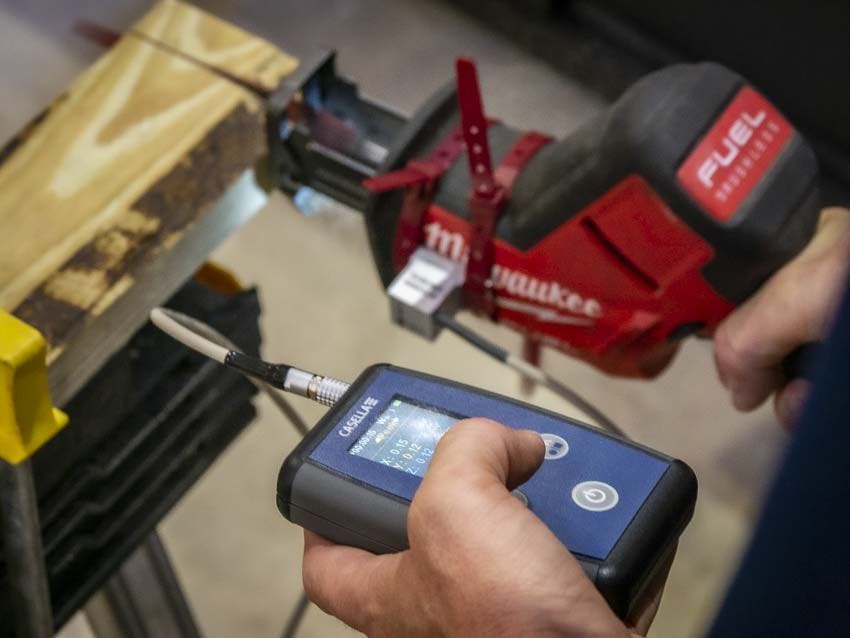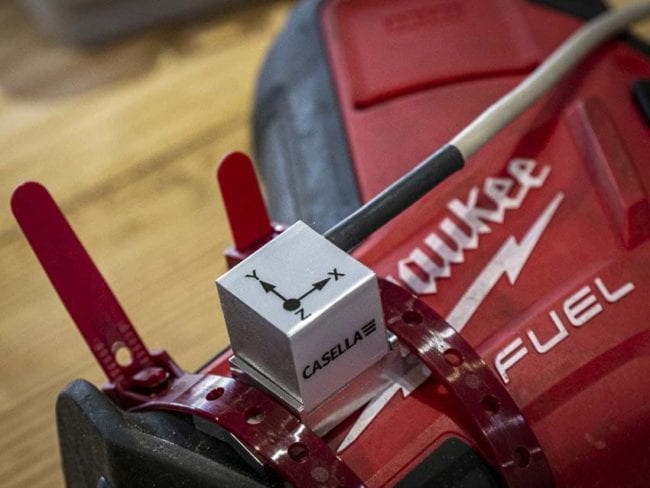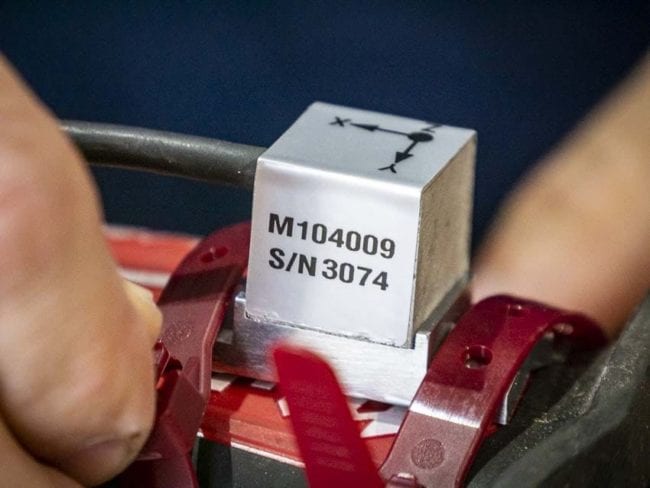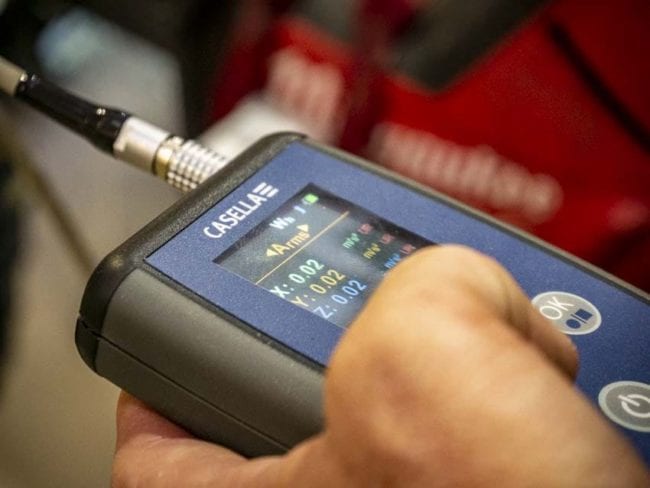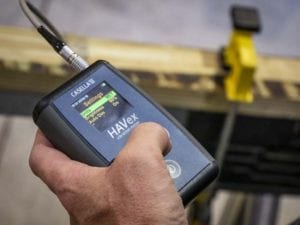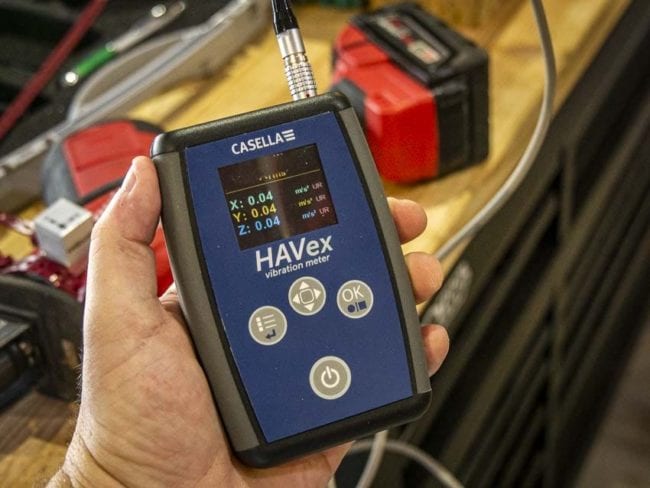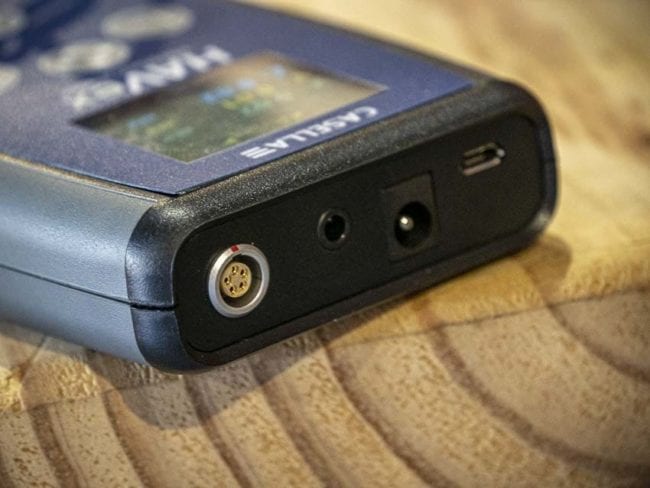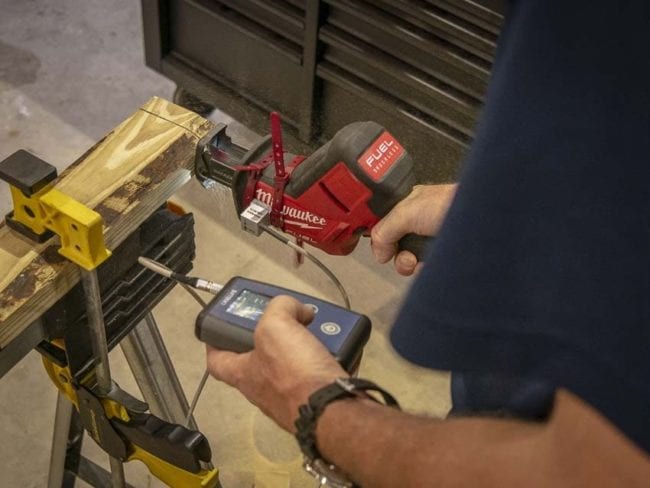PTR Takes Testing to the Next Level with Casella HAVex Vibration Meter
At Pro Tool Reviews, we look to take our testing beyond the subjective “feel” of a new tool. There’s room for that, of course, but when we can compare tools head to head with objective data, it’s awfully hard to argue with the results. To take aggressive tool testing to the next level, we’re employing the Casella HAVex vibration meter. This relatively easy-to-use instrument provides us with valuable ergonomic feedback.
Pros
- Wide detection range
- Fairly easy operation
- Stores nearly 1000 measurements
- Color display
- Helps identify issues before they become major problems
Cons
- NiMH battery is due for an upgrade to Li-ion
Recommendation
For applications where you need to measure the amount of Hand Arm Vibration, the Casella HAVex is a highly accurate way to monitor and protect your crew. It’s an instrument designed to measure vibration to your body, not as a general vibration monitor for equipment and vehicles. Even so, it’s an effective tool to form a baseline vibration level for your handheld tools and help you determine when to take them out of service for maintenance or replacement.
Measurement
The Basics
The Casella HAVex has a tri-axial design, meaning it measures vibration along 3 axes: X, Y, and Z. In general, you measure vibration as acceleration in m/s² (meters per second squared). The readings record, report, and reflect the movement of the sensor along these axes.
The magic happens in the Hand Arm Accelerometer–a small metal box that connects to the main body with a roughly 5-foot cable. That’s the piece you need to fasten to your equipment.
The best place to install it is as close to the middle of where you grip the tool. On the handheld tools we frequently use, that’s not realistic, so we have to get it as close as we can. On tools that require two hands, you need to take separate measurements at both points and average them for a single value measurement of the tool.
Pro Tip: You need to install the accelerometer as securely as you can. Any movement throws off your results. Small hose clamps and zip ties installed with a tool work well.
The accelerometer has a label to identify the 3 axes. They lay out just like a graph: X is left and right, Y is up and down, Z is in and out. The trick is remembering that it’s always in reference to the way you hold your hand on a drill. If your hand moves to a different orientation, like on a miter saw, the axes move with it. It’s important to get it right since each axis has a different weight in the calculation.
Viewing Vibration
Once the Casella HAVex warms up (just a few seconds), it immediately displays current vibration on each axis. When you’re ready to start recording, hit the “OK” button. Hit it again when you’re finished. You can store up to 992 measurements in the flash memory.
Pro Tip: To get the best results, record for at least 30 seconds.
You can view recorded data on the screen or upload it into the Casella’s Vibdata software to read on your computer. There’s a free version (Lite) that lets you read the data and a more robust paid version (Pro) that gives you the following added features:
- Exposure Calculator
- Merge/Combine Results
- Add Images
- Trend Analysis
- Add new records
Pressing the scroll button (top center) lets you cycle through several modes.
- Arms: Wh weighted, root mean square acceleration
- Aeq: Time-averaged and Wh weighted acceleration
- Amax: Maximum Arms level
- Peak: Highest Wh weighted instantaneous level
- Vector: Vector Sum calculation from the Aeq
- Exposure: Point system feedback for UK guidelines
Exposure Points
One of the most helpful features on this tool, particularly for our European friends, is the Exposure Points mode. This gives you feedback for vibration action values at 5, 15, 30, and 60-minute intervals. Anything under the Action Level of 2.50 m/s² is green. Yellow means you’re between 2.50 and 5.00 m/s². Red means you’re over the 5.00 m/s² Limit Level.
While we don’t use that scale in the US (yet), there’s some value in paying attention to it as a general guideline. More than a few new protocols and regulations have drifted here from our European neighbors.
High and Low Scales
Depending on the level of vibration you expect, you need to select a scale for the Casella HAVex to run in. Low reads from 0.050–200.0 m/s² and high reads 0.500–2000.0 m/s².
Power Source
The good news is that the meter uses a rechargeable battery, so you’re not running through AAAs like candy. It is a NiMH battery pack, but it should last a good while before requiring replacement. Replacement batteries run around $90. The 2100 mAh battery lasts up to 10 hours of continuous use.
Pro Tip: Give the meter 30 minutes to settle into the environmental conditions for the most accurate readings.
Don’t Manufacturers Have These Numbers Already?
Take a look at rotary hammers, concrete cutters, or outdoor power equipment and many manufacturers already have vibration measurements for their tools. But that’s not the end of the story.
Tools change over time with wear. Sometimes maintenance or upgrades can affect vibration. In situations where you need to monitor vibration, it’s not just a function of the manufacturer’s stated vibration and trigger time. The total actual vibration your crew experiences is what determines if they’re encountering too much.
Additionally, a spike or decrease in vibration from equipment acts as an indicator to take it out of service for maintenance. With baseline and periodic readings, you might just get ahead of more costly repairs and save your business money in the long run.
Pro Tip: Have your Casella vibration meter calibrated once a year, especially if you’re using it for compliance data.
The Bottom Line
For applications where you need to measure the amount of Hand Arm Vibration, the Casella HAVex is a highly accurate way to monitor and protect your crew. It’s an instrument specifically designed to measure vibration to your body. This differs from a general vibration monitor for equipment and vehicles. Even so, it’s an effective tool to form a baseline vibration level for your handheld tools and help you determine when to take them out of service for maintenance or replacement with regular testing.
Casella HAVex Vibration Meter Key Features at a Glance
- Simple operation
- Robust accelerometer & cable
- Color display
- Stores over 900 measurements
- High and low measurement ranges
- Rechargeable NiMH battery
- Easily view, export & report data
- Supplied as a kit with everything you need to begin measuring
Casella HAVex Vibration Meter Specifications
- Model: Casella M104006
- Level Ranges: Low: 0.05-200m/s2, 0.005-20.4g; High: 0.5-2000m/s2, 0.05-204g
- Parameters: Acceleration: Arms, Aeq, Amax, Peak, Vector Sum, Exposure Points
- Frequency Weighting: WH – Hand Arm Filter
- Memory: Flash memory storing up to 992 recordings
- Display: Full color, graphic OLED 160 x 128
- Batteries: NiMH re-chargeable (typically 10 hours continuous use)
- Connections: AC Output: 4 pole 3.5mm jack; Download: USB Micro B (cable incl.); Recharge: DC socket (charger & cable supplied)
- Environmental: Temperature: -10º C to +50º C
- Humidity: up to 90% RH non-condensing
- Price: ~$5,400
- Get more info here.

